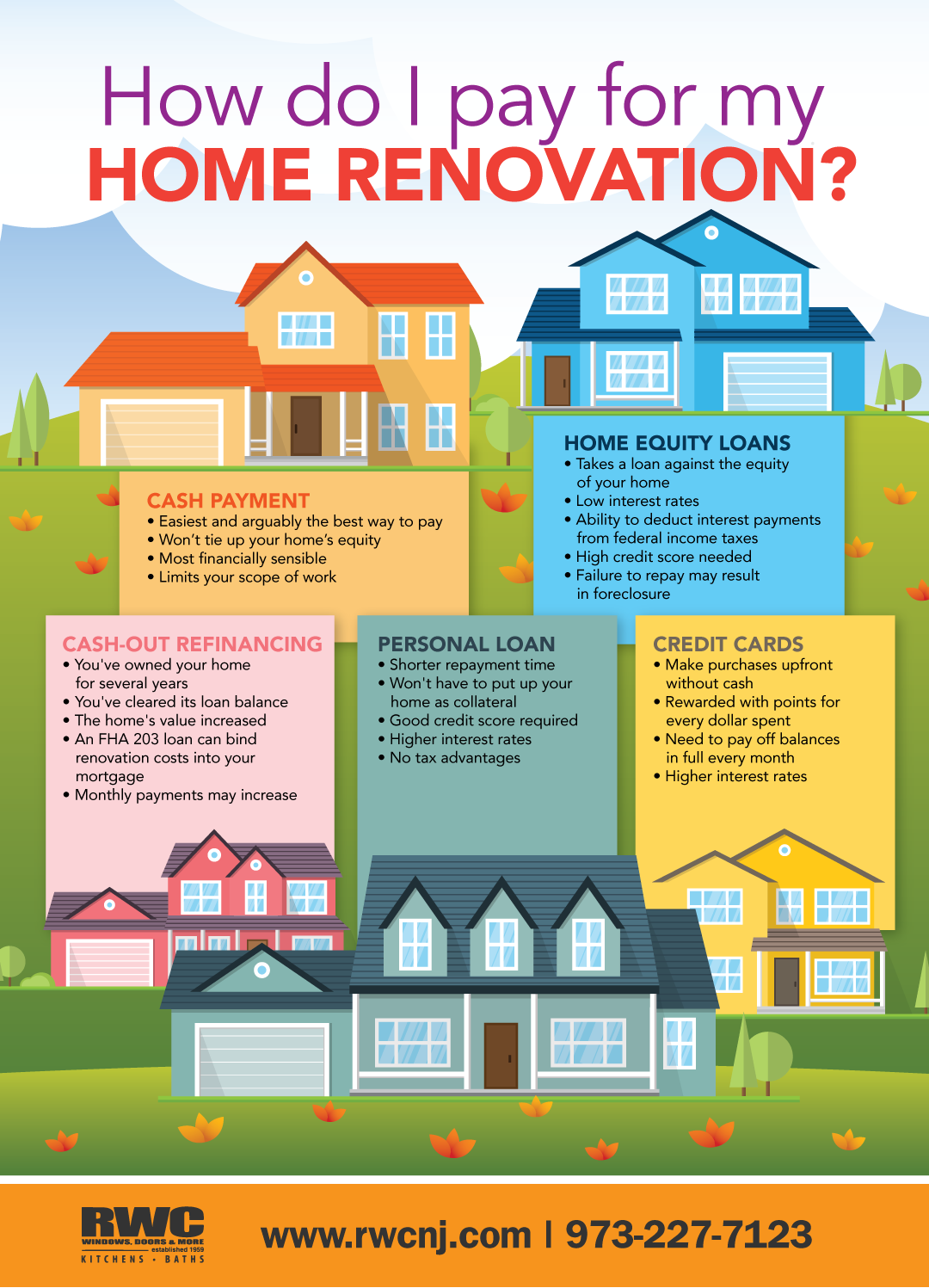The best way to take a loan for home improvement is to explore options like home equity loans or lines of credit, personal loans, or FHA Title 1 loans. These can offer competitive interest rates and flexible repayment terms to suit your needs.
When embarking on home improvement projects, securing the right financing is crucial. Whether you’re looking to remodel your kitchen, upgrade your bathroom, or make energy-efficient upgrades, finding the best loan option can make a significant difference. Understanding the various loan options such as home equity loans, personal loans, or government-backed FHA Title 1 loans, allows you to select the option that aligns with your financial situation and goals.
By considering factors such as interest rates, repayment terms, and eligibility requirements, you can effectively fund your home improvement projects and enhance the value and comfort of your home.
Exploring Loan Options
Welcome to the section of our blog where we will discuss and explore various loan options for your home improvement needs. Whether you are planning to remodel your kitchen, upgrade your bathroom, or add a new room to your home, finding the right loan is crucial. In this article, we will delve into three popular loan options: Traditional Banks, Credit Unions, and Online Lenders. Let’s explore each option and their unique benefits.
Traditional Banks
Traditional banks have long been a reliable source of loans for home improvements. With their vast experience and established reputation, they offer stability and trust to borrowers. Banks often provide competitive interest rates and flexible repayment terms, making it easier for homeowners to manage their loans. The process of securing a loan with a traditional bank usually involves a thorough review of your credit history and financial situation. Once approved, the funds are typically disbursed in a lump sum, allowing you to commence your home improvement project.
Credit Unions
Credit unions are non-profit organizations that offer loans to their members. They are known for their personalized service and community-based approach. Unlike traditional banks, credit unions tend to prioritize the well-being of their members, often offering lower interest rates and more flexible loan terms. The application process for a credit union loan is relatively simple, and they usually have a quicker turnaround time compared to traditional banks. By becoming a member of a credit union, you gain access to a wide range of financial products and services, including home improvement loans.
Online Lenders
In recent years, online lenders have emerged as a popular alternative for obtaining home improvement loans. These lenders operate exclusively online, allowing borrowers to apply for loans conveniently from the comfort of their own homes. Online lenders boast quick approval processes and fast funding, making them an attractive option for those who need immediate access to funds. The application process is often streamlined, requiring minimal paperwork and documentation. Online lenders offer a range of loan options, including fixed-rate loans and lines of credit, enabling borrowers to choose the option that best suits their needs.

Credit: www.bobvila.com
Determining Loan Amount
Before embarking on a home improvement project, it’s crucial to accurately assess the total loan amount required. Considering the extent of the renovations and improvements that are planned, homeowners need to thoroughly estimate the costs involved to determine the right loan amount for their project.
Assessing Home Improvement Costs
When evaluating the expenses associated with home improvements, it’s important to break down the costs into various categories such as materials, labor, permits, and other miscellaneous expenses. Researching the market prices for materials and labor and obtaining quotes from multiple contractors can help in getting a realistic idea of the total expenditure.
Setting A Realistic Budget
Setting a realistic budget requires careful consideration of the estimated costs and the funds available. Creating a detailed budget plan that encompasses all aspects of the project will help in determining the accurate loan amount needed for the home improvements.
Understanding Interest Rates
When considering a home improvement loan, it’s important to understand interest rates. Comparing different loan options can help in finding the best rate, ultimately saving money over the life of the loan. Understanding interest rates can empower borrowers to make informed decisions when taking out a loan for home improvement.
Understanding Interest Rates Interest rates play a crucial role in determining the total cost of a home improvement loan. It’s important for homeowners to understand the impact of interest rates, especially when considering financing options. Here, we’ll explore the differences between fixed and adjustable rates, as well as the influence of credit scores on interest rates. Fixed Rate vs. Adjustable Rate When obtaining a loan for home improvement, borrowers often have the option to choose between fixed-rate and adjustable-rate mortgage (ARM) loans. A fixed-rate loan maintains the same interest rate throughout the life of the loan, providing stability and predictability. In contrast, an ARM loan typically starts with a lower initial interest rate, but it can fluctuate based on market conditions, potentially resulting in higher payments in the future. “`htmlFixed Rate Vs. Adjustable Rate
“` Impact of Credit Score Your credit score has a significant impact on the interest rate you will be offered for a home improvement loan. Lenders use credit scores to assess the risk of lending to a particular borrower, with higher credit scores generally resulting in lower interest rates. Borrowers with excellent credit scores can potentially secure lower interest rates than those with fair or poor credit. “`htmlImpact Of Credit Score
“` In conclusion, understanding interest rates is essential when considering home improvement loans. Choosing the right type of interest rate and maintaining a good credit score can lead to significant savings over the life of the loan. By carefully considering these factors, homeowners can make informed decisions about the best way to take a loan for home improvement.Securing Collateral
When considering a loan for home improvement, securing collateral is the best way to ensure favorable terms. Using assets such as real estate or vehicles can help secure lower interest rates and larger loan amounts, providing a secure and cost-effective means to finance home improvement projects.
When it comes to financing your home improvement project, securing collateral is an important consideration. By offering collateral, you provide lenders with a form of security that can assure repayment of the loan. Collateral can come in the form of assets such as property, cars, or other valuable possessions.
Home Equity Loans
If you are a homeowner, a viable option for securing collateral is through a home equity loan. This type of loan allows you to borrow against the equity you have built up in your home. The equity represents the difference between your home’s current market value and the outstanding balance on your mortgage.
With a home equity loan, you can receive a lump sum of money upfront, with a fixed interest rate and a predetermined repayment period. The loan amount is typically determined by your credit score, the loan-to-value ratio, and the equity available in your home. This type of loan often has a lower interest rate compared to other financing options.
Personal Loans
If you do not own a home or do not want to use your home as collateral, personal loans can provide an alternative solution. Personal loans are unsecured loans, meaning they do not require collateral. Instead, lenders evaluate your creditworthiness and income to determine your eligibility and loan terms.
Personal loans are typically used for smaller home improvement projects and have a fixed interest rate and repayment term. These loans offer flexibility as you can use the funds for various purposes, not just home repairs. However, it’s important to note that personal loans may have higher interest rates compared to home equity loans due to the absence of collateral.
| Loan Type | Pros | Cons |
|---|---|---|
| Home Equity Loans |
|
|
| Personal Loans |
|
|
Ultimately, the choice between a home equity loan and a personal loan depends on your financial situation, credit score, and the specific needs of your home improvement project. Consider the advantages and disadvantages of each option to determine which loan type is the best fit for you.
Comparing Loan Terms
When deciding on the best way to take a loan for home improvement, it’s crucial to compare loan terms to make an informed choice.
Repayment Period
Consider the repayment period offered by different lenders to find a loan with terms that align with your financial goals.
Fees And Penalties
Compare the fees and penalties attached to each loan option to avoid unexpected costs down the line.

Credit: www.bankrate.com
Applying For The Loan
Applying for the Loan:
Gathering Necessary Documents:
Before applying for a home improvement loan, gather the essential documents:
- Proof of identity such as a driver’s license or passport.
- Income verification like pay stubs or tax returns.
- Property information including current value and details of planned renovations.
- Home insurance information.
Meeting Eligibility Criteria:
Ensure you meet the eligibility criteria set by the lender:
- Good credit score and history.
- Stable income to afford loan repayments.
- Low debt-to-income ratio.
- Sufficient home equity to secure the loan.
Managing Repayments
Managing repayments for a home improvement loan can be easier with careful planning and budgeting. By creating a repayment strategy and sticking to it, borrowers can ensure timely payments and minimize financial stress.
Creating A Repayment Plan
When it comes to managing repayments for your home improvement loan, it is essential to have a well-thought-out plan in place. Creating a repayment plan will help you stay organized and ensure that you meet your payment obligations on time.
Here are some steps to consider when creating your repayment plan:
- Calculate your budget: Start by evaluating your monthly income and expenses. This will help you determine how much you can afford to allocate towards loan repayments every month.
- Review your loan terms: Familiarize yourself with the terms of your loan, including the interest rate, repayment period, and any additional fees. This information will guide your repayment plan.
- Set a realistic timeline: Based on your budget and loan terms, determine a realistic timeline for repaying your loan. Remember to account for any unforeseen expenses or changes in your financial situation.
- Automate payments: To avoid missing payments, consider setting up automatic payments. This will ensure that your loan repayments are deducted from your bank account on the designated due dates.
By following these steps and creating a repayment plan, you can effectively manage your home improvement loan repayments and stay on track towards financial stability.
Avoiding Default
Avoiding default on your home improvement loan is crucial to maintain a good credit score and financial well-being. Defaulting on loan payments can have serious consequences, such as increased interest rates, fees, and even legal action. To avoid default, consider the following:
- Prioritize loan payments: Make it a priority to allocate funds towards your loan repayments before other discretionary expenses.
- Communicate with your lender: If you are facing financial difficulties, reach out to your lender to discuss potential solutions such as loan modification or refinancing.
- Seek financial assistance if needed: If you are unable to meet your loan obligations, consider seeking financial assistance from credit counseling agencies or nonprofit organizations that specialize in debt management.
- Monitor your credit: Regularly monitor your credit report to ensure that your loan repayments are being accurately reflected. This will help you identify any discrepancies and address them promptly.
By taking proactive measures to avoid default, you can safeguard your financial stability and ensure a positive credit history.

Credit: assurancemortgage.com
Frequently Asked Questions On Best Way To Take A Loan For Home Improvement
What Credit Score Do You Need For A Home Improvement Loan?
You typically need a credit score of 620 or higher for home improvement loans.
What Is The Average Length Of A Home Improvement Loan?
The average length of a home improvement loan typically ranges from 5 to 20 years.
Is A Heloc A Good Idea For Home Improvement?
A Heloc can be a good option for home improvement since it allows you to borrow against your home’s equity. This can provide flexibility and potentially lower interest rates compared to other loan options. However, consider your financial situation and consult a professional to determine if it’s the right choice for you.
Is It Better To Pay Cash Or Finance Home Improvements?
It’s better to pay cash if you have the funds available to avoid interest costs. However, financing can spread the payments out. Consider your financial situation and the interest rates available to make the best decision for you.
What Are The Best Ways To Finance Home Improvements?
To finance home improvements, consider home equity loans, personal loans, or cash-out refinancing.
Conclusion
To recap, finding the best way to take a loan for home improvement is essential for homeowners looking to upgrade their living spaces. By thoroughly researching various loan options such as home equity loans, personal loans, or government-sponsored programs, individuals can make an informed decision that aligns with their financial goals.
Remember to consider factors such as interest rates, repayment terms, and eligibility requirements before making a final choice. By following these steps, homeowners can embark on their home improvement projects with confidence, knowing they have secured the best loan option available.

